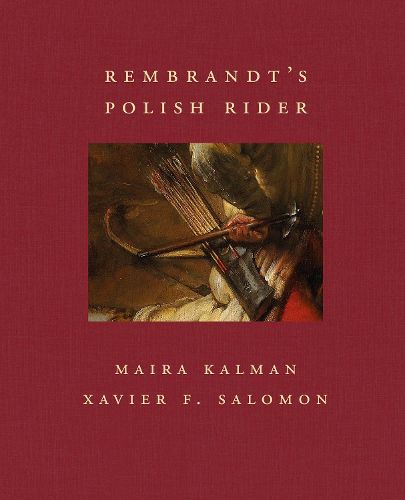Readings Newsletter
Become a Readings Member to make your shopping experience even easier.
Sign in or sign up for free!
You’re not far away from qualifying for FREE standard shipping within Australia
You’ve qualified for FREE standard shipping within Australia
The cart is loading…






Offers fresh insight into one of Rembrandt’s most romantic and enigmatic paintings.
The romantic and enigmatic character of this picture has inspired many theories about its subject, meaning, history, and even its attribution to Rembrandt. Several portrait identifications have been proposed, including an ancestor of the Polish Oginski family, which owned the painting in the eighteenth century, and the Polish Socinian theologian Jonasz Szlichtyng. The rider’s costume, his weapons, and the breed of his horse have also been claimed as Polish. But if The Polish Rider is a portrait, it certainly breaks with tradition. Equestrian portraits are not common in seventeenth-century Dutch art, and furthermore, in the traditional equestrian portrait the rider is fashionably dressed and his mount is spirited and well-bred. The painting may instead portray a character from history or literature, and many possibilities have been proposed. Candidates range from the Prodigal Son to Gysbrech van Amstel, a hero of Dutch medieval history, and from the Old Testament David to the Mongolian warrior Tamerlane. It is possible that Rembrandt intended simply to represent a foreign soldier, a theme popular in his time in European art, especially in prints. Nevertheless, Rembrandt’s intentions in The Polish Rider seem clearly to transcend a simple expression of delight in the exotic. The painting has also been described as a latter-day Miles Christianus (Soldier of Christ), an apotheosis of the mounted soldiers who were still defending Eastern Europe against the Turks in the seventeenth century. Many have felt that the youthful rider faces unknown dangers in the strange and somber landscape, with its mountainous rocks crowned by a mysterious building, its dark water, and the distant flare of a fire. AUTHORS: Maira Kalman was born in Tel Aviv and moved to New York with her family at the age of four. She now lives in Manhattan. Maira has written and illustrated numerous books, including Cake, And the Pursuit of Happiness and The Principles of Uncertainty. She is the illustrator of Michael Pollan’s Food Rules and the bestselling edition of William Strunk and E. B. White’s The Elements of Style. Kalman’s work is shown at the Julie Saul Gallery in Manhattan.
50 colour illustrations
$9.00 standard shipping within Australia
FREE standard shipping within Australia for orders over $100.00
Express & International shipping calculated at checkout
Offers fresh insight into one of Rembrandt’s most romantic and enigmatic paintings.
The romantic and enigmatic character of this picture has inspired many theories about its subject, meaning, history, and even its attribution to Rembrandt. Several portrait identifications have been proposed, including an ancestor of the Polish Oginski family, which owned the painting in the eighteenth century, and the Polish Socinian theologian Jonasz Szlichtyng. The rider’s costume, his weapons, and the breed of his horse have also been claimed as Polish. But if The Polish Rider is a portrait, it certainly breaks with tradition. Equestrian portraits are not common in seventeenth-century Dutch art, and furthermore, in the traditional equestrian portrait the rider is fashionably dressed and his mount is spirited and well-bred. The painting may instead portray a character from history or literature, and many possibilities have been proposed. Candidates range from the Prodigal Son to Gysbrech van Amstel, a hero of Dutch medieval history, and from the Old Testament David to the Mongolian warrior Tamerlane. It is possible that Rembrandt intended simply to represent a foreign soldier, a theme popular in his time in European art, especially in prints. Nevertheless, Rembrandt’s intentions in The Polish Rider seem clearly to transcend a simple expression of delight in the exotic. The painting has also been described as a latter-day Miles Christianus (Soldier of Christ), an apotheosis of the mounted soldiers who were still defending Eastern Europe against the Turks in the seventeenth century. Many have felt that the youthful rider faces unknown dangers in the strange and somber landscape, with its mountainous rocks crowned by a mysterious building, its dark water, and the distant flare of a fire. AUTHORS: Maira Kalman was born in Tel Aviv and moved to New York with her family at the age of four. She now lives in Manhattan. Maira has written and illustrated numerous books, including Cake, And the Pursuit of Happiness and The Principles of Uncertainty. She is the illustrator of Michael Pollan’s Food Rules and the bestselling edition of William Strunk and E. B. White’s The Elements of Style. Kalman’s work is shown at the Julie Saul Gallery in Manhattan.
50 colour illustrations